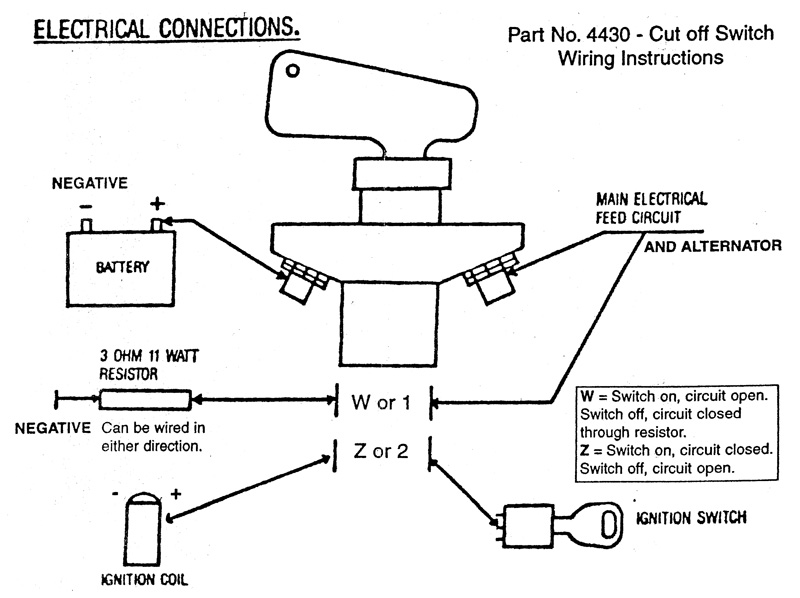I did a couple of searches on this forum and elsewhere, and found some good discussions, but really couldn't convince myself of the right thing, and I'm no electrical engineer. I'm a visually-oriented guy, so maybe using these diagrams you can all help me.
Given the wiring diagram below, can I place a simple single-pole switch in the circuit that runs around the left and top of the diagram, either right before or right after the big 200A fuse? Or do I need one of the multi-pole switches that somehow connect into the alternator circuit?
I'm thinking the simpler approach will work. The junction point with the 8 large fuses you see eventually leads to the ignition switch, among other places.
If I need the multi-pole switch, can someone please explain to me how to wire it? I found this diagram below from Pegasus, but it's not descriptive enough for me to know what to do with it. Pegasus seems to say that all cars with alternators need these multi-pole switches, but based on what I've read elsewhere, as long as the alternator is still connected to the battery, then the single-pole switch should work?
Thanks for the help!








 Reply With Quote
Reply With Quote






Bookmarks